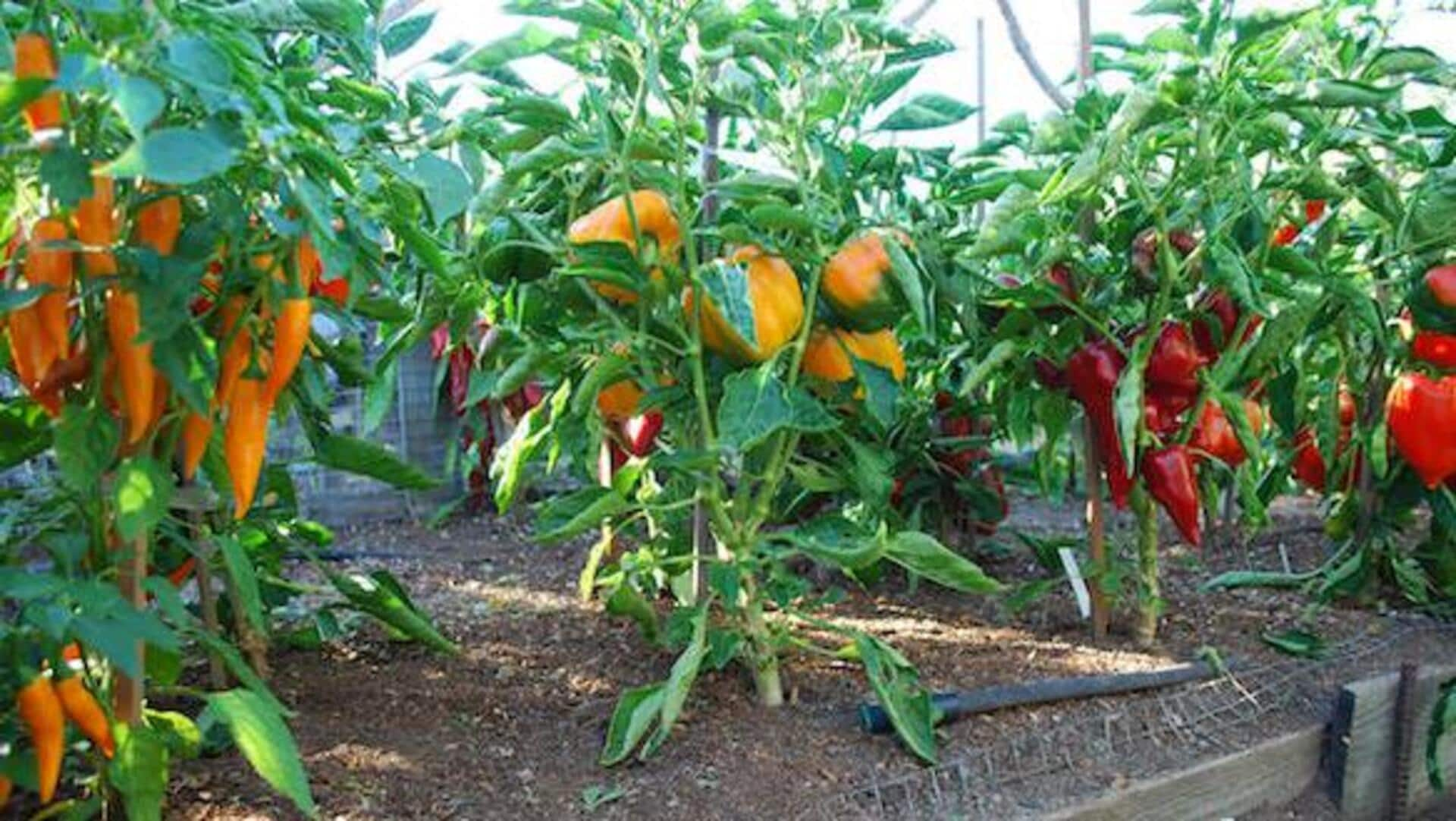
Cultivating sweet peppers in vertical gardens
What's the story
Growing sweet peppers vertically is a game changer! It's super efficient and saves a ton of space, letting you grow way more peppers in a small area. This blog post spills all the secrets on how to grow sweet peppers vertically like a pro. It covers everything: choosing the right varieties, setting up vertical structures, creating the perfect growing conditions, and keeping pests away.
Varieties
Choosing the right varieties
Not all sweet pepper varieties are well-suited for vertical gardening. You need to choose compact and bushy types that are comfortable in limited spaces. Dwarf and mini bell pepper varieties (think Mohawk and Red Mini Bell) are perfect. Their smaller size and lighter fruit weight mean less stress on your vertical structures.
Setup
Setting up your vertical garden
The key to a thriving vertical garden for sweet peppers is selecting the appropriate support structure. Consider trellises, stakes, or get creative with repurposed items like pallets or ladder frames. Make sure it's robust enough to handle the weight of mature plants burdened with fruit. Adding a drip irrigation system can make watering a breeze and guarantee even moisture distribution.
Conditions
Providing optimal growing conditions
Sweet peppers need a minimum of six hours of direct sunlight each day for a plentiful harvest. Make sure to place your vertical garden where it will get plenty of sun throughout the day. The ideal temperature for growth is between 18 degrees Celsius and 30 degrees Celsius. Use a high-quality potting mix enriched with compost or well-rotted manure for healthy growth. This will supply the necessary nutrients.
Pests
Managing pests naturally
Even vertical gardens aren't immune to pesky invaders like aphids and spider mites. To combat these pests naturally, consider adding beneficial insects like ladybugs or lacewings to your garden. These helpful critters hunt down harmful pests without harming your plants. Regularly checking your plants for signs of infestation and promptly removing affected leaves can also help prevent the spread of pests.
Watering
Watering techniques for healthy growth
Sweet peppers require consistent watering, particularly during flowering and fruit development phases. Establish a routine watering schedule early in the morning or late in the evening to reduce evaporation losses. To minimize leaf wetness and the potential for fungal diseases, avoid overhead watering. Instead, use soaker hoses or drip irrigation systems positioned at the base of plants.